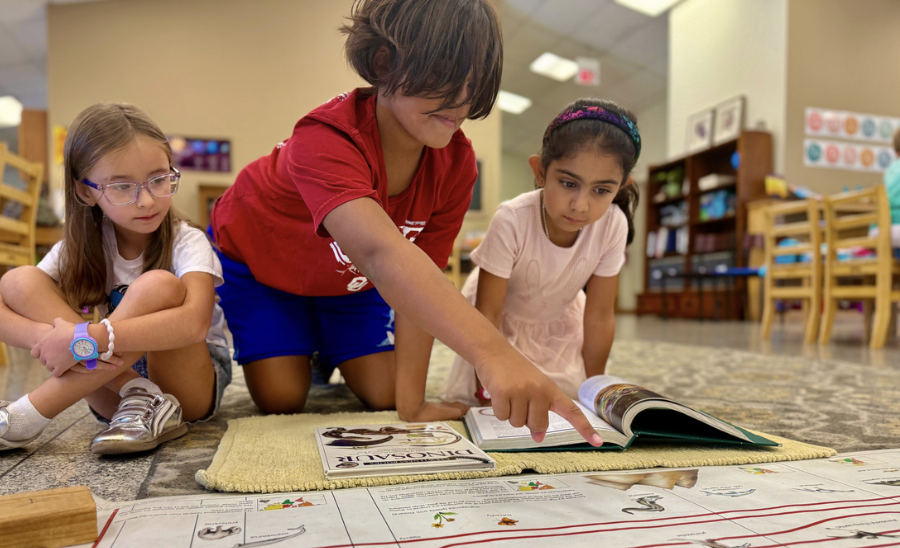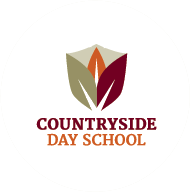At Countryside, our Elementary classroom is a vibrant community. It is a place where children build the habits, character, and confidence that prepare them for real life — not just the next grade.
Below are some of the most common questions families ask when learning more about authentic Montessori practice at the elementary level.
What about technology — do they learn it?
There’s often a misconception that Montessori Elementary is anti-tech. We’re not anti-tech — we’re pro-child. Our focus is on building the thinking skills that make technology meaningful: curiosity, focus, problem-solving, and responsibility. Once those foundations are strong, digital tools are introduced purposefully — occasionally for research, writing, and presentations — always paired with conversations about digital citizenship, balance, and using technology with intention.
These habits are the real preparation for life — not just knowing how to use a device, but knowing when and why to use it.
How many children are in each class?
Our Elementary classrooms typically have between 35 and 55 students, depending on the year. No matter the number, teachers truly know every child — their strengths, interests, and growth areas. When enrollment is higher, we simply add additional adults to maintain the same level of attention and support.
The classroom functions like a small society — children manage time, collaborate, take on leadership, and navigate real responsibility. It mirrors real life far more closely than traditional classrooms where everyone is the same age, doing the same thing, at the same time. In Montessori, children learn to organize their work, follow through on commitments, and respect the needs of a community — skills that serve them well far beyond school walls.
What about the social piece? Will my child get enough exposure to larger groups?
That’s a question we hear often — and it’s an important one. Montessori social development looks a little different, but it’s deeply intentional. In our multi-age classrooms, children interact constantly across grade levels, learning collaboration, empathy, and leadership in a real-world way.
Because children remain in the same community for up to six years, friendships deepen and relationships grow stronger over time. They don’t just see one another for a single school year — they grow up together, learning how to communicate, compromise, and support one another through every stage of development.
Smaller school communities allow teachers to guide social growth closely — children don’t just share space, they work together on meaningful projects, resolve conflicts respectfully, and build genuine friendships that often last for years. Beyond the classroom, students join mixed-age recess, community events, performances, and school-wide experiences that give them plenty of time in larger groups.
In short: they’re learning how to be part of a community — not just how to “fit in,” but how to contribute, lead, and connect — which is exactly what real life requires.
Can you tell if Montessori or a traditional setting is a better fit for a child?
In our experience, Montessori is an ideal fit for all children — it’s less about personality and more about readiness for choice, independence, and responsibility. The environment is designed to meet each child where they are and help them grow at their own pace with an appropriate amount of challenge.
That said, there are some children who benefit from more one-on-one or specialized support than we’re structured to provide. In those cases, a setting with additional services — such as individualized therapies or more direct adult intervention — may better meet their needs. In these cases, our goal is always to partner with families to find the environment where each child can thrive, whether that’s here or elsewhere.
How does placement work when they move to another school?
When students transition to a new school at 7th grade, we provide detailed narratives about their progress — not just grades, but real descriptions of skills, strengths, and habits of mind. Receiving schools consistently tell us how well-prepared our students are, both academically and socially.
Countryside graduates are confident learners who know how to manage their time, work collaboratively, and think critically — qualities that translate beautifully to any next step. The longer a child remains in this type of environment, the stronger those skills become!
By the time they leave for 7th grade, they’ve already lived what most middle schools are trying to teach — independence, self-motivation, and emotional maturity. These are not things that happen at age four or five, when children are still discovering themselves. They are the fruits of years spent in a community that gives them time, trust, and real responsibility.
In Closing
Countryside’s Elementary program is real preparation for real life. Our students learn how to think, plan, problem-solve, collaborate, and care for their community — skills that will serve them anywhere they go next.
If you haven’t yet spent time in our classroom, come observe. You’ll see children who are not just learning lessons — they’re learning life. And the longer they’re immersed in this kind of environment, the more confident, capable, and compassionate they become.



Leave a Comment